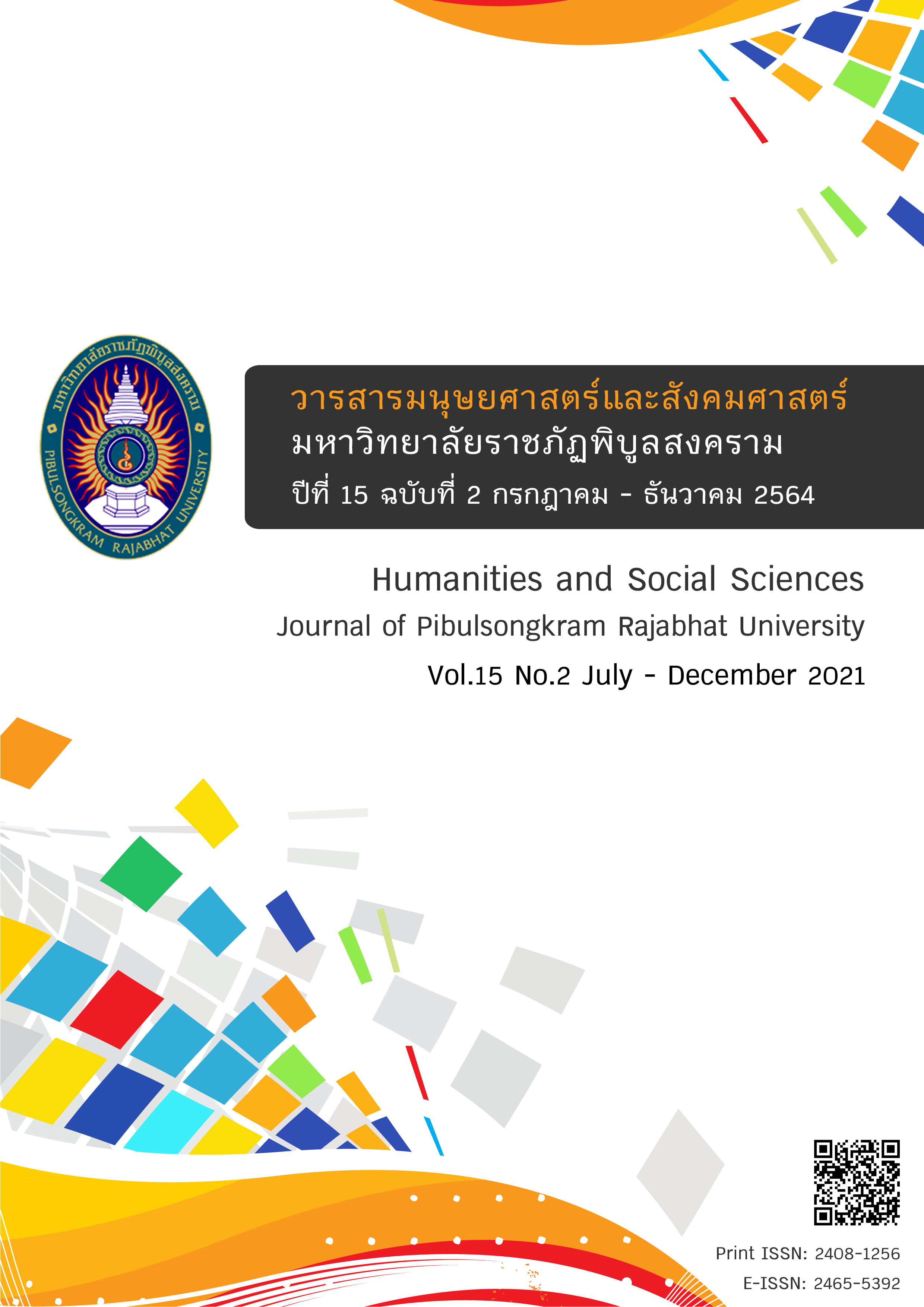Effects of Computer Assisted Language Learning Using the 4DX Approach on TOEIC Test Ability of Pre-Service Teachers
DOI:
https://doi.org/10.14456/psruhss.2021.31Keywords:
Computer Assisted Language Learning, 4 Disciplines of Execution, Test of English for International CommunicationAbstract
The purposes of this research were to 1) develop and test the efficiency of a computer assisted language learning using the 4DX approach of pre-service teachers as with the criteria of 80/80 2) study the effects of computer assisted language Learning using the 4DX approach on TOEIC test ability of pre-service teachers. This study was one group pretest-posttest design: experimental research. The study design was a purposeful sample during 14 weeks. The samples were 26 second to fourth-year pre-service teachers who were studying in the first semester, academic year 2019, Private University in Chiangmai Province. The research instruments were 1) computer assisted language learning using the 4DX approach 2) a pretest and posttest Test of English for International Communication (TOEIC Test) by using a virtual test Tactics for TOEIC® Listening and Reading Test by Oxford University. The data were analyzed using mean, S.D and Dependent t-test. The results revealed as follows: 1) the efficiency score of a computer assisted language learning using the 4DX approach was 77.54/78.10 which is the expected criterion (80/80). 2) the posttest mean scores of pre-service teachers’ on TOEIC test ability were higher than pretest scores at a significant level of .05.
References
ชัยยงค์ พรหมวงศ์. (2556). การทดสอบประสิทธิภาพสื่อหรือชุดการสอน. สืบค้น 12 เมษายน 2562, จาก http://www.educ.su.ac.th/2013/images/stories/081957-02.pdf.
สถาบันภาษาอังกฤษสำนักคณะกรรมการการศึกษาขั้นพื้นฐาน. (2558). กรอบมาตรฐานสากลของสหภาพยุโรป. สืบค้น 10 เมษายน 2562, จาก http://english.obec.go.th/english/2013/index.php/th/2012-08-08-10-26-5/74-cefr.
สำนักงานปลัดกระทรวงศึกษาธิการ. (2561). นโยบายและจุดเน้นการจัดการศึกษาของกระทรวงศึกษาธิการ ปีงบประมาณ 2562. สืบค้น 2 ตุลาคม 2562, จาก http://www.reo2.moe.go.th
สำนักงานเลขาธิการสภาการศึกษา. (2561). รายงานการศึกษาไทย พ.ศ. 2561. กรุงเทพฯ: โรงพิมพ์พริกหวานกราฟิก.
Chujo, K., & Oghigian, K. (2009). How Many Words Do You Need to Know to Understand TOEIC, TOEFL & EIKEN? An Examination of Text Coverage and High Frequency Vocabulary. THE JOURNAL OF ASIA TEFL, 6(2), 121-148.
Covey, F. (2019). Discipline 3: Keep A Compelling Scoreboard. Retrieved June 1, 2020, from https://www.franklincovey.com.au/discipline-3-keep-a-compelling-scoreboard.
Covey, F. (2019). Discipline 4: Create A Cadence Of Accountability. Retrieved June 1, 2020, from https://www.franklincovey.com.au/discipline-4-create-a-cadence-of-accountability.
Covey, S. (2008). The leader in me. New York, NY: Simon & Schuster.
Covey, S. (2018). 4DX: Using 4 Disciplines of Execution to Close the Education Gap. Retrieved October 5, 2019 , from https://www.leaderinme.org/blog/4dx/.
Davis, J. N., & Lyman-Hager, M. N. (1997). Computers and L2 reading: student performance, student attitudes. Foreign Language Annals, 30(1), 48-69.
Dewan, G. (2013). Effectiveness of a computer-assisted vocabulary learning package for nursing students and their learning attitude (Thesis the Degree of Master of Arts Degree). Prince of Songkla, Thailand.
Edgar, R. (2017). Interactive computer language teaching using a personal website: A case study. Retrieved September 10, 2019, from https://www.researchgate.net/profile/Edgar_Eslit.
Gagne, M. R. (1987). Conditions of Learning (Robert M. Gagne). Retrieved October 1, 2019, fromhttps://www.instructionaldesign.org/theories/conditions-learning/.
Kosinski, L. (2014). Goal Setting: 4 Questions for Students to Consider and Answer. Retrieved October 1, 2019, from https://www.leaderinme.org/blog/goal-setting/.
McCheesney, C., Covey, S., & Huling, J. (2012). 4DX The Disciplines of Execution. Franklin Covey.
Nishanthi, R. (2018). Important of learning English in today world. International Journal of Trend in Scientific Research and Development, 3(1), 870-874.
Nunart, N. (2013). Creating a computer-assisted instruction on the web page for students grade 6 (Thesis of the doctoral degree of computer science). Atlantic International University, Hawaii.
Oxford University & English Testing Service. (2011). Tactics for TOEIC Listening and Reading Test (10th ed.). Oxford University: Oxford University Press.
Platt, T. (2014). Implementing a Student-regulated Learning Tool in Reading: A Heuristic Case Study. (A Dissertation in Education). University of Missouri-Kansas City, Missouri.
Pompei, T. L. (2017). Learning Success with 4DX. Retrieved October 10, 2019, from http://www.classylearn.com/wp-content/uploads/2017/06/4DX.pdf.
Reid, J. (1996). A learning styles unit for the intermediate ESL/EFL writing classroom. TESOL Journal, 6(1), 43-47.
Sornkam, B., Person, R. K., & Yordchim, S. (2018). Reviewing the Common European Framework of Reference for English Language. In Thailand Higher Education. Graduate School Conference 2018. 15 November 2018 (p. 1-7). Bangkok: Suan Sunandha Rajabhat University.
Tomonori, O. (2017). Vocabulary learning through computer assisted language learning. Hitotsubashi Journal of Arts and Sciences, 58, 67-72.
Zimmerman, C. B. (1997). Do reading and interactive vocabulary instruction make a difference? An empirical study. TESOL Quarterly, 31(1), 121-139.
Downloads
Published
How to Cite
Issue
Section
License
Any articles or comments appearing in the Journal of Humanities and Social Sciences, Rajabhat Phibulsongkram University, are the intellectual property of the authors, and do not necessarily reflect the views of the editorial board. Published articles are copyrighted by the Journal of Humanities and Social Sciences, Rajabhat Phibulsongkram University.









